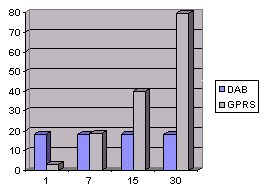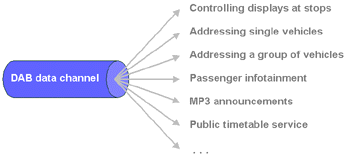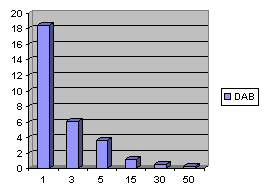Why using DAB for industrial control?
In particular this is the case with point-to-multipoint applications. Even with fixed applications you can reduce installation costs and installation time when using DAB instead of wires.
When addressing a higher number of receivers, DAB datacasting becomes an unbeatable economical solution. See the example below from Munich:
Following, we're assuming to send 1 megabyte per day to a group of receivers.
With DAB, transmission costs remain the same no matter how many receivers there are: it's always 18 Euros per day.
With GPRS **), a typical point-to-point transfer, the situation is quite different. With this technology we reach the DAB transmission costs with as few as just seven receivers.

**) T-Mobile "Data 5" rate, 1 MB daily transfer volume assumed (September 2003).
All prices excluding VAT, device costs and possible network access costs.

